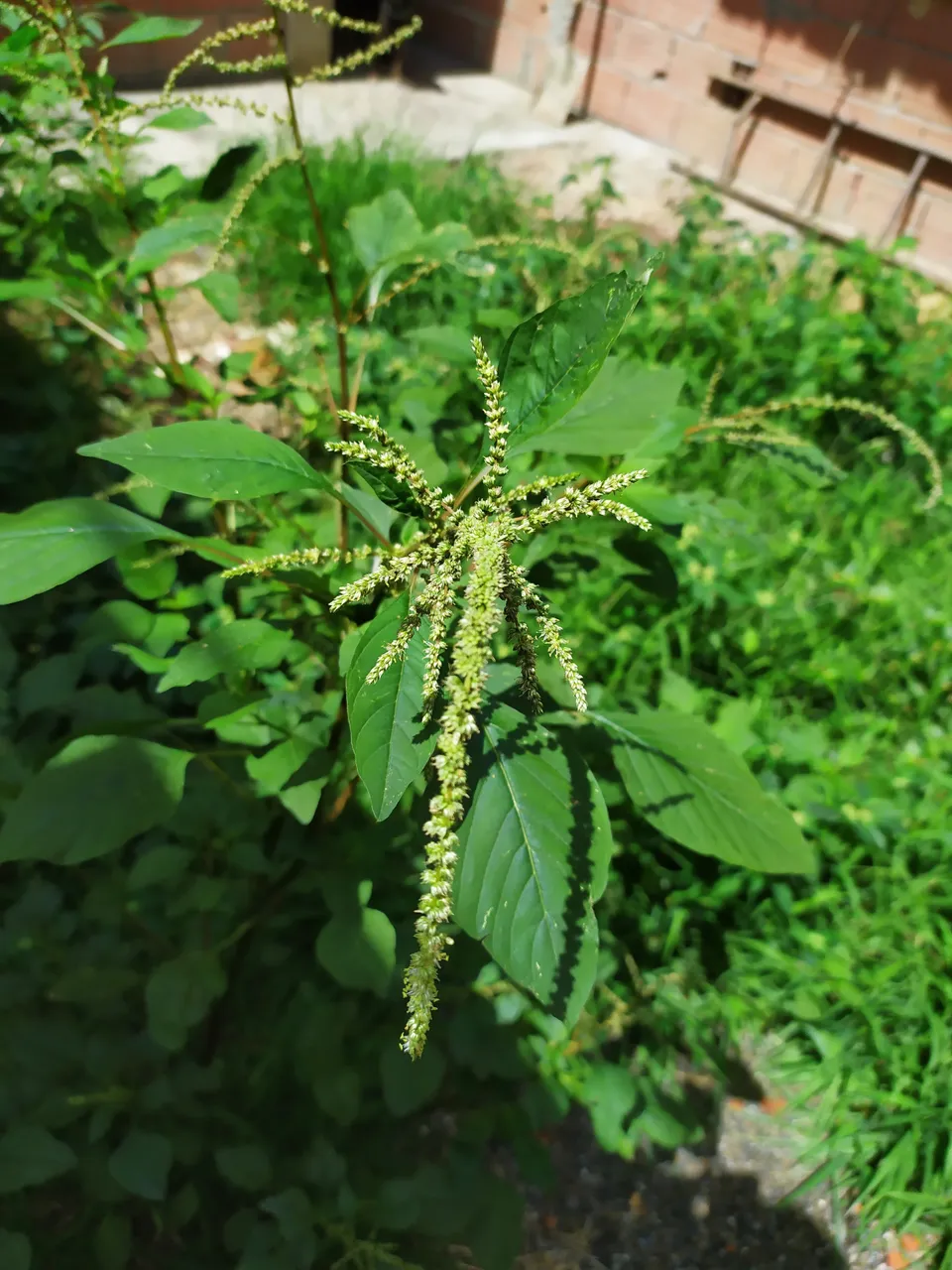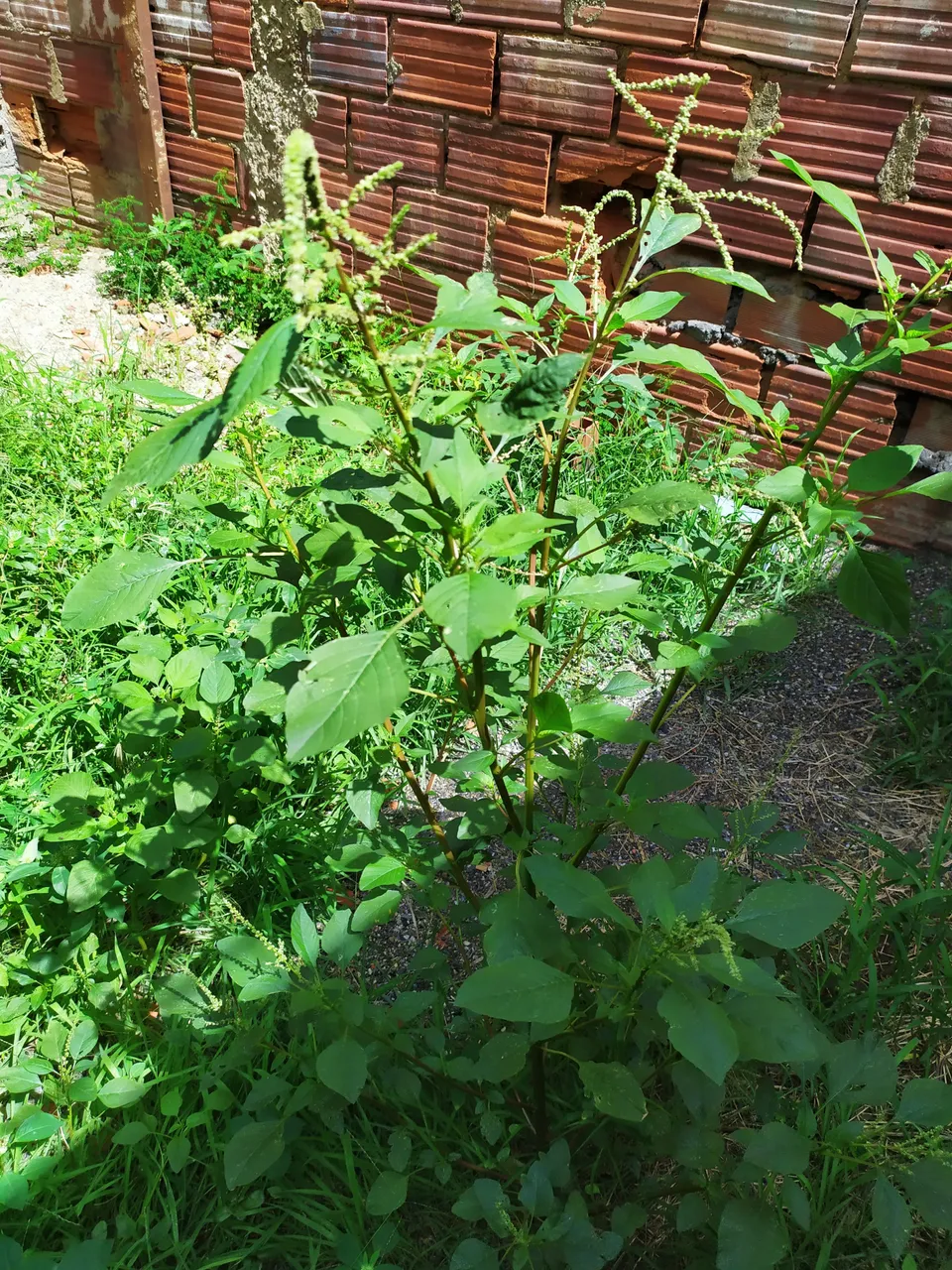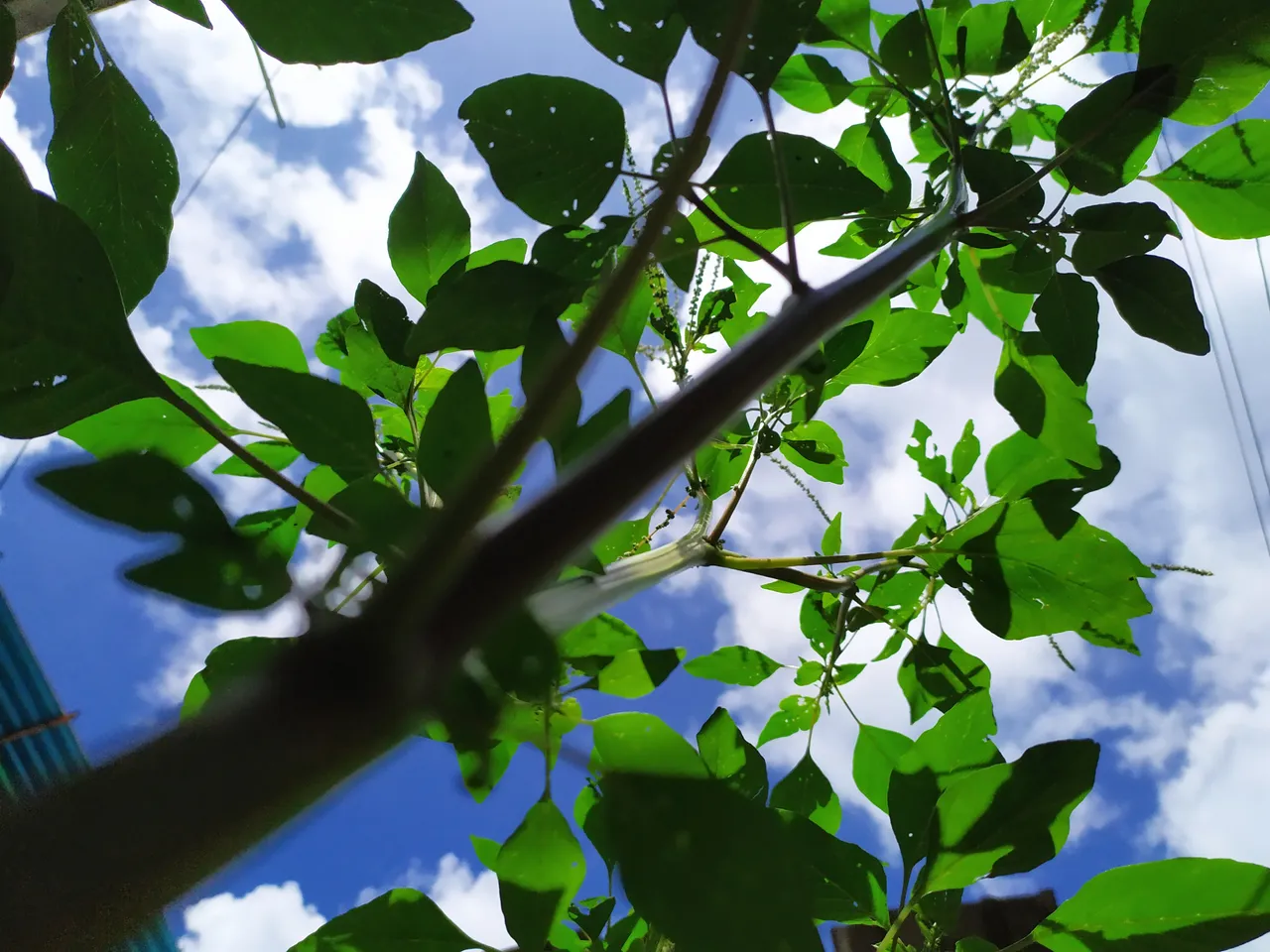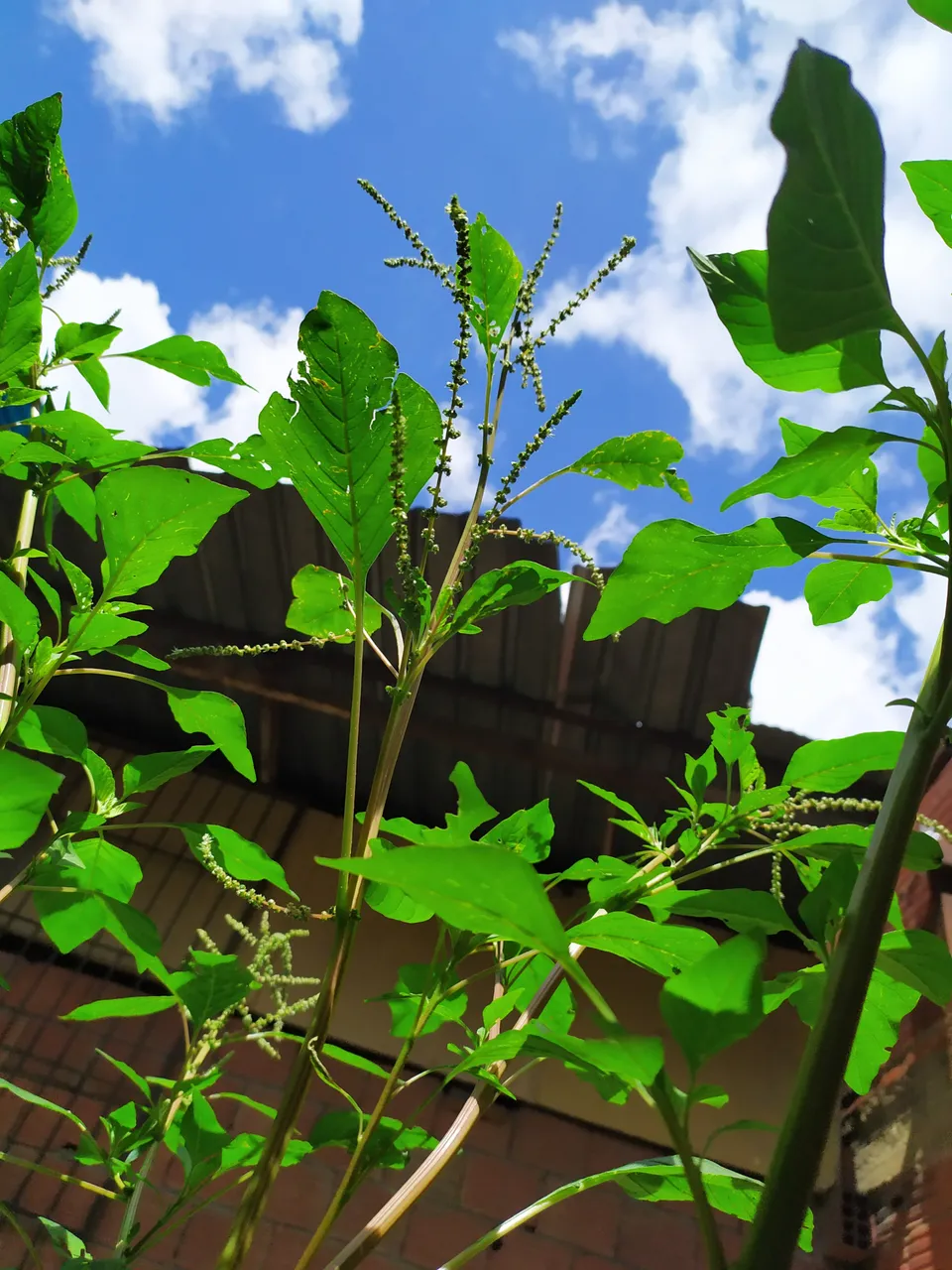


AMARANTO O PIRA

La planta de Amaranto, también conocida como Pira, es una de las plantas con mayores beneficios tanto nutricionales como medicinales. Es una planta que crece como monte, en terrenos baldíos y casas abandonadas. sus hojas y tallos poseen un potencial de oxigenación cerebral y corporal, superior incluso a muchos medicamentos. Es antiinflamatorio, previene el cáncer, combate la fatiga y el estrés. Tomado en infusión o comido en ensaladas, el bledo es una de las hierbas menos conocida y más útil.
The Amaranth plant, also known as Pira, is one of the plants with the greatest nutritional and medicinal benefits. It is a plant that grows like a bush, in vacant lots and abandoned houses. Its leaves and stems have a potential for brain and body oxygenation, even higher than many drugs. It is anti-inflammatory, prevents cancer, fights fatigue and stress. Taken as an infusion or eaten in salads, pigweed is one of the least known and most useful herbs.





Su nombre científico es amaranthus (del griego 'que no se marchita', 'símbolo de la inmortalidad y deseos de salud'), es una planta herbácea o arbusto que es anual o perenne en todo el género. Las flores varían interespecíficamente de la presencia de 3 o 5 tépalos y estambres. Las hojas miden aproximadamente 6,5 a 15 centímetros y de forma ovalada o elíptica que son opuestas o alternas a través de especies, aunque la mayoría de hojas son conjunto y sencilla, con bordes enteros.
Its scientific name is amaranthus (from the Greek 'that does not wither', 'symbol of immortality and wishes for health'), it is a herbaceous plant or shrub that is annual or perennial in all the genus. The flowers vary interspecifically in the presence of 3 or 5 tepals and stamens. The leaves are approximately 6.5 to 15 centimeters long and oval or elliptical in shape that are opposite or alternate across species, although most leaves are whole and plain, with entire edges.





Su tallo es marrón oscuro, verde o rojizo, puede llegar a 50 centímetros de altura, tiene una raíz primaria con estructuras de raíces fibrosas secundarias de extensión más profunda. Las inflorescencias tienen la forma de una gran panícula que varía de terminal a axial, color y sexo. La borla de la fluorescencia está erecta o doblada y varía en ancho y largo entre especies. Las flores son radialmente simétricas y bisexuales o unisexuales con un perianto muy pequeño y erizado y brácteas puntiagudas. Las frutas están en forma de cápsulas denominadas Pixdio unilocular que se abre en la madurez. La parte superior del pixdio unilocular libera la urna que contiene la semilla. Las semillas son de forma circular y varían en color con una cubierta lisa y brillante.
Its stem is dark brown, green or reddish, it can reach 50 centimeters in height, it has a primary root with deeper extension fibrous secondary root structures. The inflorescences have the shape of a large panicle that varies from terminal to axial, color and sex. The fluorescence tassel is erect or bent and varies in width and length between species. The flowers are radially symmetrical and bisexual or unisexual with a very small, bristling perianth and pointed bracts. The fruits are in the form of capsules called Pixdio unilocular that opens at maturity. The upper part of the unilocular pixel releases the urn containing the seed. The seeds are circular in shape and vary in color with a smooth, shiny coat.





Propiedades del Amaranto:
Calcio, fósforo, hierro, magnesio, potasio, hierro, zinc, cobre, vitamina B1 o tiamina, B2 o rivoflavina, B3, A y C.
Aminoácidos como la lisina
Ácido fólico.
Calorías, proteínas, carbohidratos, fibra y ceniza.
Amaranth Properties:
Calcium, phosphorus, iron, magnesium, potassium, iron, zinc, copper, vitamin B1 or thiamine, B2 or rivoflavin, B3, A and C.
Amino acids like lysine
Folic acid.
Calories, protein, carbohydrates, fiber, and ash.





Se puede consumir de diferentes formas:
INFUSIÓN: con una cucharada de la planta seca en una taza de agua hirviendo. Se cuela y toma.
ENSALADA: las hojas de Bledo son escaldadas, pasadas por agua hirviendo como las acelgas, se incorporan a las ensaladas.
CÁPSULAS: bien sea compradas ya envasadas en tiendas naturistas o encapsulado el polvo, conservan todas sus propiedades.
It can be consumed in different ways:
INFUSION: with a tablespoon of the dried plant in a cup of boiling water. It sneaks in and takes.
SALAD: Bledo leaves are blanched, passed through boiling water like chard, they are incorporated into salads.
CAPSULES: either bought already packaged in health food stores or encapsulated the powder, they retain all their properties.


Todos los creditos para las siguientes fuentes de información: / All credits to the following sources of information:
http://plantasana.blogspot.com/2016/03/usos-del-bledo-pira-o-amaranto.html?m=1#:~:text=La%20planta%20de%20Amaranto%2C%20tambi%C3%A9n,terrenos%20bald%C3%ADos%20y%20casas%20abandonadas.
https://en.m.wikipedia.org/wiki/Amaranth
TODAS LAS FOTOGRAFÍAS SON DE MI PROPIA AUTORÍA. / ALL PHOTOGRAPHS ARE MY OWN AUTHORITY.


MUCHÍSIMAS GRACIAS / MANY THANKS






























